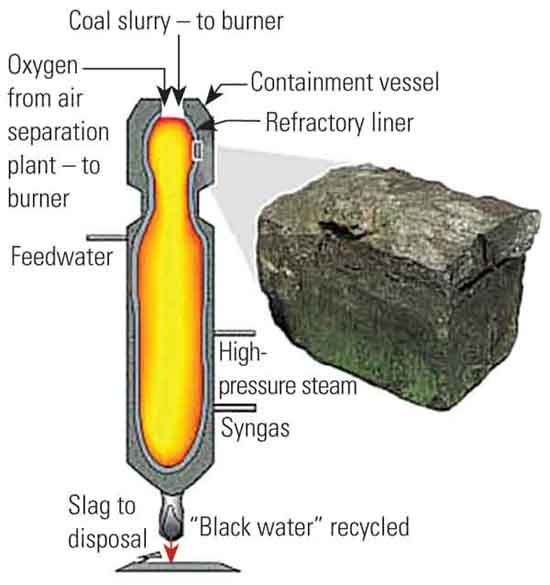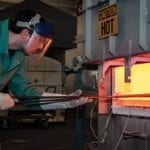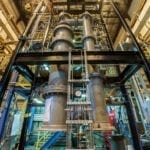Successful testing of a new refractory lining material developed by the Office of Fossil Energy’s National Energy Technology Laboratory (NETL) could lead to higher reliability and improved economics of gasification technology.
The NETL-developed material, "AUREX95P" (Figure 4) represents the "most significant improvement in gasifier refractories in over 25 years," and it could eliminate roadblocks that limit the use of gasification technology for electric power and other product production, the federal laboratory said last November.

4. A silver lining. The National Energy Technology Laboratory has developed a phosphate- modified high-chrome oxide material that increases the service life of components (refractories) used to line the interior of slagging gasifiers, when compared with conventional liner materials. The NETL refractory has approximately 50% more material remaining after the test. Source: NETL
Refractory materials are used to line the interior of slagging gasifiers, where a carbon-based feedstock (such as coal, petroleum, coke, and/or biomass) is converted at high temperatures in an oxygen-short atmosphere into hydrogen and carbon monoxide, or syngas. The refractory lining is necessary to protect the steel shell of the gasification chamber from the harsh environment necessary for the gasification process — which includes elevated temperature and pressures, reactive gases, thermal shock, and corrosive slags resulting from mineral impurities in the carbon feedstocks that liquefy during the gasification process.
Refractory materials that can withstand severe operating conditions for long periods of time are necessary for a continuous, efficient, and reliable gasification process. But, according to NETL, the traditional high-chrome oxide refractory used to line gasifiers fails in three to 24 months, requiring complete shutdown of the unit for material replacement. The poor service life has been a major factor contributing to poor online gasifier availability and reliability. This in turn has limited wider commercial deployment of gasification.
The newly improved material, AUREX 95P, is a phosphate-modified high-chrome oxide material that increased material service life up to a stunning 50% in field trials when compared with conventional liner materials, NETL said. This performance is achieved by reducing slag penetration and structural spalling at the refractory hot face — a critical cause of liner failure.
NETL said that it continues to advance gasification technology, including improved refractory materials. The target is to develop a refractory material that can last years — rather than months — and to achieve online availability of more than 90%. AUREX95P, meanwhile, has been transferred via license to Pittsburgh-based Harbinson-Walker Refractories Co. for production and marketing as a refractory liner material for commercial gasifiers.
— Sonal Patel is POWER’s senior writer.










